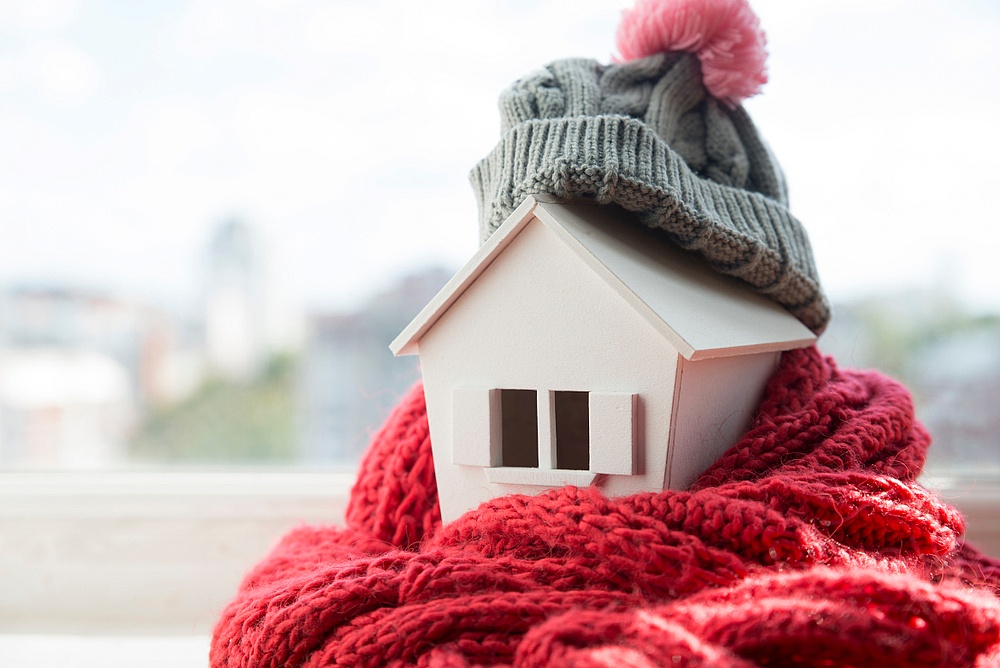
When protecting against the elements in cold-winter areas, the different structural and mechanical systems in a home bear an extra load. Water may be problematic even under the best of circumstances, but the problems are enormous in areas where water freezes for weeks or months. Here are some guidelines to help you safeguard your home from cold temperatures and the difficulties that come with them.
Take Precautions With Water Pipes
As the weather cools, I disconnect and store any garden hoses to prevent outdoor plumbing fittings from freezing. Then I turn off the water to my outside faucets, empty the lines, and wrap the hose bibs in insulation. When indoor plumbing pipes go through outside walls, I take special care to monitor them over the winter and ensure that wall insulation meets specified criteria.
Repair Any Holes Or Cracks
Even small gaps where cable cables or phone lines enter our homes might be an entry point for frigid air—or a way for valuable interior heat to depart. I buy a can of foam insulation and shut it up. Then I repair any breaches around my doors and windows with weather stripping, spray foam insulation, or caulking. Examining the home's exterior for cracks and gaps is an annual ritual in colder climates.
 Insert Insulation
Insert Insulation
I keep my pipes from freezing and my house warm by ensuring appropriate insulation. Insulating my external walls, crawl area or basement, attic, and, in many situations, the pipes themselves are part of this. Our local energy utility provider may provide free in-home energy audits to examine our energy consumption and propose actions to raise the R-value in our walls and ceilings to recommended levels for our region.
Maintain the Flow of Water
If any of my indoor faucets are placed on outside walls that are not sufficiently insulated, I set them to a steady drip if the temperature falls well below freezing. This usually is only required during really extreme cold spells. Faucets and pipes near external walls are particularly vulnerable to freezing. I make sure that both the hot and cold lines are slightly opened for optimal efficacy because both are susceptible. Also, I consider keeping cabinet doors open so that the room air can warm my pipes.
Maintain Easy Access To The Water Shut-Off Valve
If a water line ever freezes and bursts, you must immediately turn off the home's water supply. If clutter prevents simple access to my main water shut-off valve, I reorganize my basement or garage to be easily accessible in the case of a plumbing emergency. Then I double-check that the shut-off valve is in good functioning condition. Turning the valve handle completely counterclockwise should turn off all water to the house. I replace the primary shut-off valve immediately if it is rusted open or only partially closed—this is usually a job for a professional plumber. I take it a step further by ensuring that everyone in my house understands the shut-off valve and how to use it to turn off the water.
 Find The Water Meter
Find The Water Meter
I invest in a meter key (or keep an adjustable wrench on hand) so that I can turn off the water at the meter if the shut-off valve fails. Then I try turning on and off the water to understand how it is done.
Keep The Garage Doors Shut
Because my garage is linked to my house, I keep my garage door closed as often as possible. This keeps cold air out of my house and protects the plumbing fixtures in my garage and the pipes in the shared walls between the house and garage.
Cleaning Drainage Systems
Full drains increase the likelihood of ice forming on the roof, which I do not want to cope with. I set aside some time to clean up my drains before the cold weather arrived. Sewer screens, sometimes known as "helmets," help keep leaves from blocking gutters.
Examine the Attic Ventilation
Proper attic ventilation is critical for preventing roof ice jams. I examine my attic to ensure that no insulation obstructs my soffits or attic vents. The open airflow in my attic keeps warm air from melting snow on the roof, where it may run down and refreeze at the roof edges.
Keep The Thermostat Set
I keep replacement batteries on hand to ensure that my thermostat can function continually. Small details may sometimes rescue the day.
Replace Your Appliances
I can boost my home's energy efficiency while keeping it warm during the cold weather months by replacing an aging furnace or acquiring more efficient equipment.
Seal Around Windows
We may also be losing heat around our windows. We significantly reduced our heating expenses by ensuring that they were adequately caulked.
Overall, It May Be Said!

As seasons change, it is time to prepare our houses for the cold. By doing the abovementioned easy actions, you may improve your home's energy efficiency and protect it from damage caused by rain, snow, and freezing temperatures, as well as the common cold and flu.






Comments (0)
Leave a comment